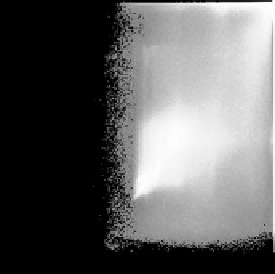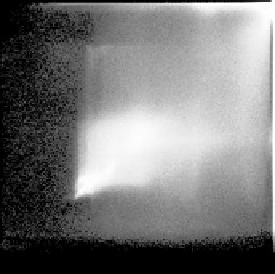Biomedical Engineering Reference
In-Depth Information
Before correction
After correction
Figure 8.7:
Joint histogram before and after intensity correction. To compute
the joint histogram, MR volumes have been previously rigidly registered by max-
imizing mutual information [88].
favor the SEM or the EM algorithm. There may be an indication that the SEM
is more adapted in presence of field inhomogeneity and should be investigated
further.
The relevance of this intensity correction can be assessed using the joint
histogram (Fig. 8.7). To compute the joint histogram, a spatial alignment of the
volumes needs to be performed. To do so, we estimate a rigid displacement
that maximizes mutual information [88]. Figure 8.7 shows the joint histogram
before and after intensity correction (using EM and seven Gaussian laws to
model the histogram). It must be noted that the same displacement has been
applied to the corrected and uncorrected volume (in other words, the effect of a
possible misalignment is equal for both histograms). The joint histogram shows
the relevance of the intensity correction.
8.3.3.2
Experiments on Simulated Data
Evaluation on the MNI Phantom.
To evaluate the global registration
method, we use the simulated data provided by the MNI
3
[34]. Data have been
collected with three levels of noise and inhomogeneity. We design a synthetic
deformation field made up of a global affine field with large deformations com-
bined with local stochastic perturbations. We do not try to build a “realistic”
3
Brainweb: http://www.bic.mni.mcgill.ca/brainweb


